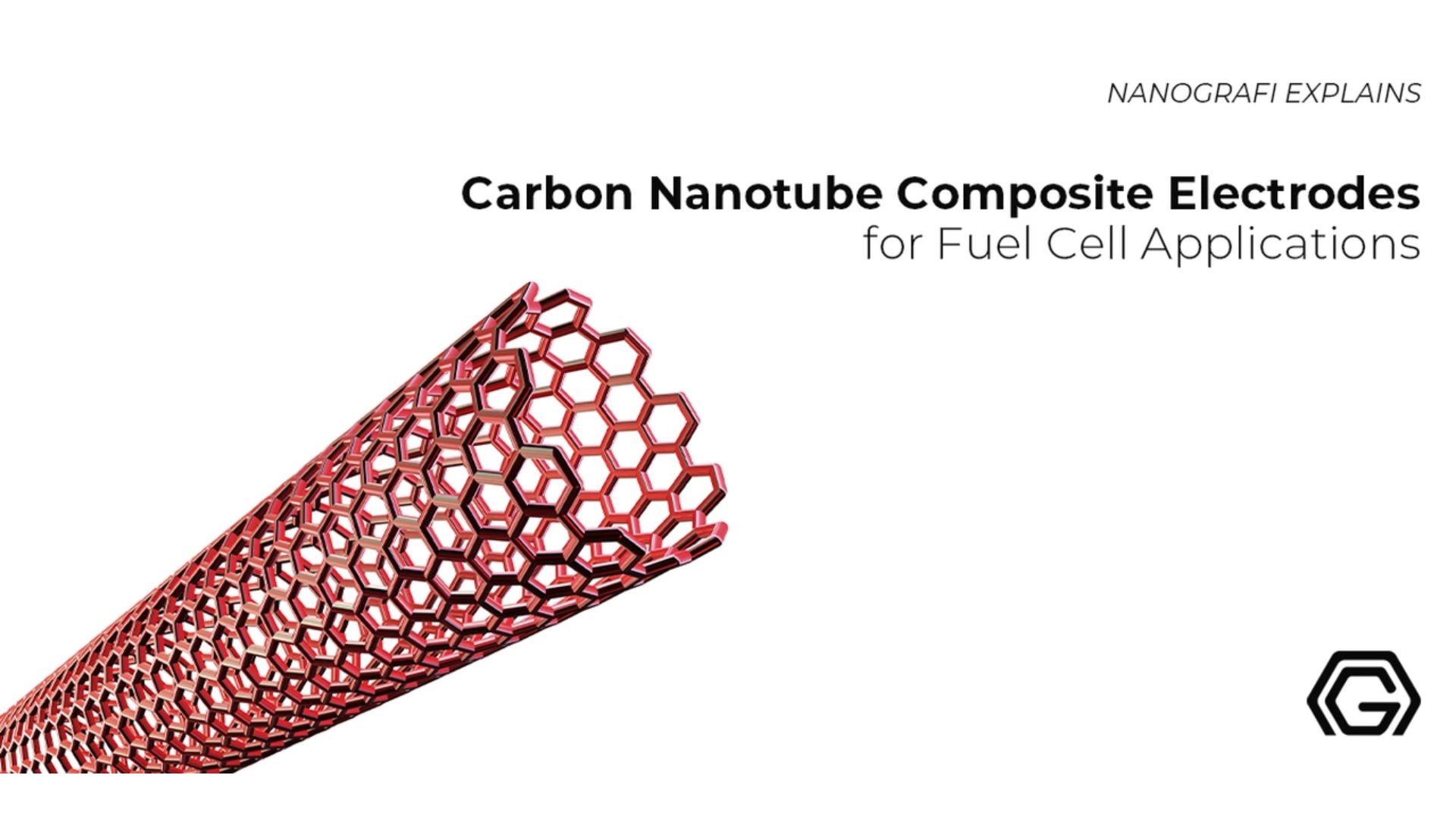Carbon Nanotube Fibers
From the stone ages to modern history, new materials have often been the enablers of revolutionary technologies. For a wide variety of envisioned applications in space exploration, energy-efficient aircraft, and armor, materials must be significantly stronger, stiffer, and lighter than what is currently available.
Carbon nanotubes (CNTs) have extremely high strength, very high stiffness, low density, good chemical stability, and high thermal and electrical conductivities. These superior properties make CNTs very attractive for many structural applications and technologies.
Introduction
It is known that CNT fibers are many times stronger and stiffer per weight than the best existing engineering fibers and over twenty times better than other reported CNT fibers. Additionally, CNT fibers are nonbrittle and tough, making them far superior to existing materials for preventing catastrophic failure. These new CNT fibers will not only make tens of thousands of products stronger, lighter, safer, and more energy efficient, but they will also bring to fruition many envisioned technologies that have been to date unavailable due to material restrictions.
Mechanical Properties of CNTs
The combination of high strength, high stiffness, and low density affords CNTs with extremely high values for specific strength and specific stiffness. The most effective way to utilize these properties is to assemble CNTs into fibers. However, despite extensive worldwide efforts to date, the specific strength and specific stiffness of CNT fibers that have been reported by various research groups are much lower than currently available commercial fibers. Strong, stiff, and lightweight are critical property requirements for materials that are used in the construction of space shuttles, airplanes, and space structures. These properties are assessed by a material’s specific strength and specific stiffness which are defined as the strength or stiffness (Young’s modulus) of a material divided by its density.
Electrical Properties of CNTs
Carbon nanotube (CNT) fibers have great potential for conducting and sensing applications owing to their unique, tunable electrical properties. Owing to their conjugated and highly anisotropic 1D structures, carbon nanotubes (CNTs) are a fascinating new class of electronic materials from both theoretical and applied stand points. The excellent conductivities of CNTs and their ability to carry very high current density, along with their high thermal conductivity, chemical stability, and mechanical strength, make CNTs uniquely promising for a broad range of applications, including building blocks for nanoscale electronic devices, microsensors for bio-agents and chemicals and power cables for space shuttles. The electrical resistivity of individual CNTs has been measured under ballistic conductions to be as low as 10-6 Ω cm for single walled and 3×10-5 Ω.cm for multiwalled CNTs, respectively, indicating that CNTs may be better conductors than metals such as copper at room temperature. However, in most cases, due to the presence of various defects or impurities formed during the CNT growth, the conductivities of individual CNTs are often much lower than those under ballistic conduction with nanotubes which are free of defects. The electron transport in CNT assemblies is different from that in individual nanotubes. It has been reported that single-walled carbon nanotube (SWNT) fibers, either synthesized directly by vertical floating chemical vapor deposition (CVD) methods or extruded from a super-acid suspension, exhibit room-temperature resistivities in the range of 1 × 10-4 to 7×10-4 Ω.cm, which is nearly 100 times higher than the resistivities of single nanotubes. The resistivities of multi-walled carbon nanotube (MWNT) fibers are typically one or two orders of magnitude higher than that of SWNT fibers. Such large differences between single nanotubes and fiber assemblies may arise from a high impurity content (such as amorphous carbon and catalytic particles) in the fibers, which may profoundly affect electron transport by causing significant scattering, and contact resistances between nanotubes.
To get more information about the utilization of carbon nanotubes,
you can read our blog post here.
Synthesis
The direct-spinning method of creation of CNT fibers has received a lot of attention because of its simplicity to produce high-performance material without apparent limits to its size. CNT fibers or films have shown unparalleled properties and opened new areas of research and commercial development. The process designed more than a decade ago has already given interesting information about the basic science of nanomaterials, which in parallel led to the creation of the first prototypes with high potential of implementation in everyday life. Because of this, there has been growing interest in this technique with research articles coming into view from all around the world on a frequent basis.
A key issue in fabricating high-performance CNT fibers is to align the individual CNTs along the fiber axis. To date, there are four main methods of producing CNT fibers: (1) spinning from CNT solution, (2) spinning from a vertically aligned CNT array previously grown on a substrate, (3) spinning from a CNT aerogel formed in a chemical vapor deposition (CVD) reactor, and (4) twisting/rolling from a CNT film. The first method is also known as solution state (or wet) spinning, while the others are referred to as solid state (or dry) spinning. Both pure CNT fibers and polymer-infiltrated composite fibers can be obtained by each method. Other fabrication methods include cotton-like spinning and electrophoresis-based spinning.
Spinning from CNT Solution
Coagulation spinning is widely used for making Kevlar, acrylic, and poly(acrylonitrile) (PAN) fibers. In this process, a polymer solution is extruded into a bath that contains a second liquid in which the solvent is soluble, but the polymer is not. In the last decade, various coagulation spinning approaches have been developed for spinning both CNT composite fibers and pure CNT fibers.
Spinning from CNT Arrays
Just like drawing a thread from a silk cocoon, CNT fibers can be produced by spinning from vertically aligned arrays. In 2002, Jiang et al. [3] spun a 30-cm-long CNT fiber from a CNT array 100 μ m in height. Since then, tremendous efforts have been directed toward optimizing spinning processes to improve the performance of CNT fibers. Studies have found that not all CNT arrays can be spun into fibers, and the degree of spinnability of CNTs is closely related to the morphology of CNT arrays. To date, several research groups around the world have produced continuous CNT fibers using this spinning method.
Spinning from CNT Aerogel
The aforementioned assembling of CNTs into continuous fibers has been achieved only through post-processing methods by spinning from CNT solutions and CNT arrays. CNT fibers can also be assembled directly from a furnace chamber where individual CNTs are synthesized. Zhu et al. [1] first reported the direct synthesis of long strands of ordered SWCNTs using a floating catalyst CVD method in a vertical furnace, as shown in Fig. 3.
Figure 3: Schematic of the setup producing CNT strands by the floating catalyst method.
To get more information about carbon nanotubes,
you can read our blog post here.
Potential Applications of CNTs
Recent advances in the fabrication of high-performance CNT fibers have motivated considerable efforts in their scientific and engineering applications. To date, potential applications in many fields, such as multifunctional composites, sensing, transmission lines and electrochemical devices, etc., have been explored.
High Strength/High Toughness Fibers
Based on their superb mechanical and physical properties, as well as their low density and high aspect ratio, CNTs have been envisioned as promising materials for tethers of space elevators and reinforcements for lightweight, high-strength, multifunctional composites. Studies have shown that dispersing a small amount of individual CNTs in the matrix materials can greatly enhance composite mechanical and physical properties.
Strain/Damage Sensors
CNT fibers can be utilized as piezoresistive sensors with excellent repeatability and stability. CNT fibers, which possess repeatable, stable resistance-strain behavior as well as low density, can be permanently integrated within a composite part during fabrication with minimal invasiveness and weight penalty. The embedded yarn sensors can be used to monitor the composite deformation in real time.
Transmission Lines
Due to the superb electrical conductivity of metallic CNTs, CNT fibers have the potential to become next-generation power transmission lines. Electrons move ballistically down nanotubes and do not scatter as they do in other conducting materials such as copper and aluminum. Because scattering increases the resistance of metals, it causes power lines to heat up, expand, and then sagging lines are notorious for knocking down trees and causing blackouts. CNT fibers fabricated thus far contain not only metallic CNTs but also semiconducting CNTs, which greatly limit the electrical conductivity of CNT fibers. In recent years, considerable research has been directed at reducing the electrical resistance of CNT fibers and improving the applicability of CNT fibers as electrical transmission lines and low dimensional interconnects.
Electrochemical Devices
Because of their high specific surface area, combined with their desirable mechanical properties and high electrical conductivity, CNT fibers have many promising applications in electrochemical devices such as microelectrodes, supercapacitors and actuators.
Microelectrode for Biosensing
The nanoscale surface topography and porosity of CNT fibers can facilitate molecular-scale interactions with agents like enzymes, aiding in the efficient capture and promotion of electron transfer reactions, which makes CNT fiber an ideal microelectrode for biosensing.
Supercapacitors
It is well known that the capacitance for an electrochemical device depends on both the separation and the contact area between the charge layer on the electrode and the countercharge
layer in the electrolyte. The small charge layer separation (∼ 1nm) within the CNT fiber electrode and the high nanotube surface area accessible to the electrolyte are expected to induce
high capacitance of CNT fiber supercapacitors. In the last few years, notable efforts have been made to investigate the electrochemical properties of CNT fiber supercapacitors.
Electromechanical Actuators
Early studies found that CNTs can expand and contract upon charge injection and can be used for the development of electromechanical actuators. In the recent years, the electromechanical properties of CNT fibers and their applications have also been extensively studied. CNT fiber electrodes have been found to contract when an electric potential is applied between the fiber and another electrode, both submersed in an electrolyte. The mechanism of this contraction is related to the insertion of ions in the yarn and the structural changes that take place in the yarn due to its helical twisted structure.
Conclusion
As a unique kind of CNT assembly, preliminary studies have shown that CNT fibers can potentially transfer the superb properties of individual CNTs to the micro and macro-structural level. CNT fibers possess higher specific modulus and specific strength than those of commercial carbon and polymeric fibers, although the modulus and strength values are still low. Furthermore, the processes for fabricating CNT fibers are simpler than those for producing traditional high-performance fibers. Thus, this new kind of fibers could have wide applications in many fields. However, the science and technology of CNT fibers are still in their infancy. Future sustained research effort is required before the full potential of CNT fibers can be realized.
To get more information, you can visit Blografi.
References
- Zhu, J. (2015). Electrical Property of Carbon Nanotube Fibers from Chemical Vapor Deposition Synthesis. Proceedings of the 2015 International Conference on Materials, Environmental and Biological Engineering. doi:10.2991/mebe-15.2015.198
- Ericson, L. M. (2004). Macroscopic, Neat, Single-Walled Carbon Nanotube Fibers. Science,305(5689), 1447-1450. doi:10.1126/science.1101398
- Lu, W., Zu, M., Byun, J., Kim, B., & Chou, T. (2012). State of the Art of Carbon Nanotube Fibers: Opportunities and Challenges. Advanced Materials,24(14), 1805-1833. doi:10.1002/adma.201104672
- Janas, D., & Koziol, K. K. (2016). Carbon nanotube fibers and films: Synthesis, applications and perspectives of the direct-spinning method. Nanoscale,8(47), 19475-19490. doi:10.1039/c6nr07549e
- Gorga, R. (2007). Structure and properties of carbon nanotube-polymer fibers using melt spinning. Nanofibers and Nanotechnology in Textiles, 235-255. doi:10.1533/9781845693732.2.235
- Alignment of Carbon Nanotubes in Carbon Nanotube Fibers Through Nanoparticles: A Route for Controlling Mechanical and Electrical Properties. (n.d.). doi:10.1021/acsami.6b12869.s001
- Zhang, F., & Liu, Y. (2020). Interphase structures and properties of carbon nanotube-reinforced polymer nanocomposite fibers. Carbon Nanotube Fibers and Yarns, 71-102. doi:10.1016/b978-0-08-102722-6.00005-5
- Meng, Q., Hu, J., & Zhu, Y. (2007). Shape-memory polyurethane/multiwalled carbon nanotube fibers. Journal of Applied Polymer Science,106(2), 837-848. doi:10.1002/app.26517
- Ren, J., Li, L., Chen, C., Chen, X., Cai, Z., Qiu, L., . . . Peng, H. (2012). Twisting Carbon Nanotube Fibers for Both Wire-Shaped Micro-Supercapacitor and Micro-Battery. Advanced Materials,25(8), 1155-1159. doi:10.1002/adma.201203445
- Vilatela, J. J., Elliott, J. A., & Windle, A. H. (2011). A Model for the Strength of Yarn-like Carbon Nanotube Fibers. ACS Nano,5(3), 1921-1927. doi:10.1021/nn102925a
Recent Posts
-
Nanocomposites in Food Packaging
The utilization of nanocomposites in food packaging represents a significant advancement in the fiel …19th Apr 2024 -
What is the Difference Between 7075 and 6061 Aluminum Alloy?
When comparing 7075 aluminum alloy to 6061 aluminum alloy, it's essential to understand their disti …5th Apr 2024 -
Iron-Air Batteries: The Ultimate Guide
Iron-air batteries represent a significant breakthrough in energy storage technology, offering a sus …29th Mar 2024








